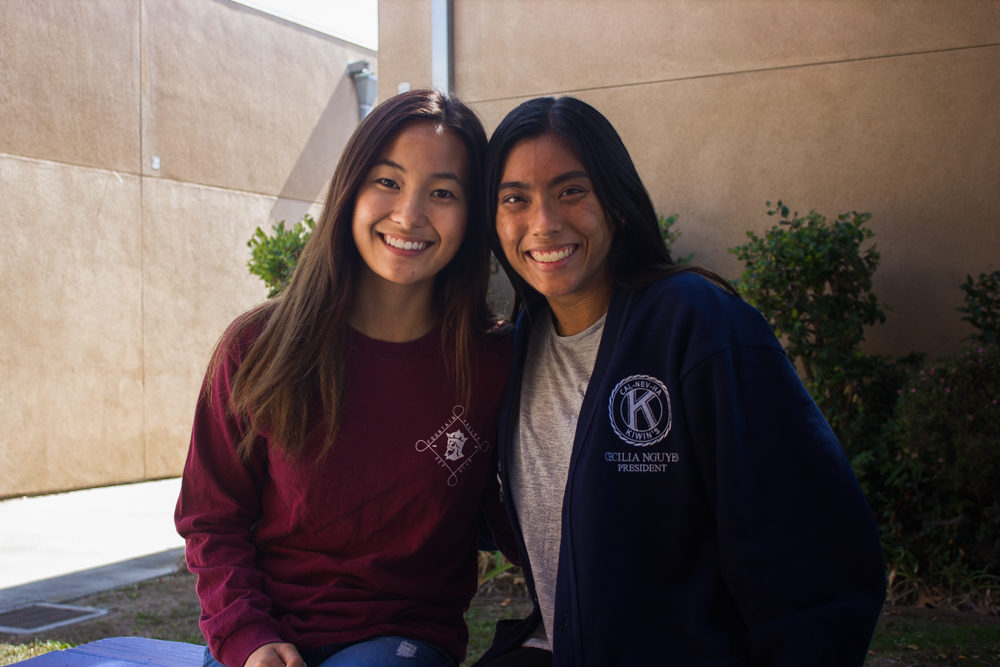
- President of Key Club, senior Kelly Yam, and President of KIWIN’S, senior Cecilia Nguyen, lead clubs that have similar goals. Photo by Kiet Phan.
By Britney Tran & Hien Bui, Staff Writers
It’s Club Rush. A newcomer to Fountain Valley High School (FVHS) strolls through the various clubs and sees the masses lining up around the KIWIN’s and Key Club booths. Situated on different sides of the bowl, the clubs seem to echo the same message which begs the question—what’s the difference?
For many FVHS newcomers, school clubs unlock the opportunity to meet new people, develop lasting bonds with their fellow Barons and the chance to create enduring high school memories. KIWIN’S and Key Club are fixtures of the FVHS campus and the Fountain Valley community, but what pushes some to join one and not the other? Both clubs seem remarkably similar in their agendas and purposes, so what’s the real distinction here?
Key Club itself began as a junior service branch of the already established Kiwanis Club, another international service club that was mainly open to adults. The purpose of the club’s establishment was to act as a wholesome alternative to the fraternities available to high school boys in 1925. Through the years, the club grew in membership and global outreach until it reached its current position as the oldest and largest service program open to high school students today.
KIWIN’S, on the other hand, began more recently.
“KIWIN’S was made back in the 70s, I think. Originally, it was another version of Key Club, but only for girls until [the clubs became all-inclusive],” said Justin Nguyen, Key Club’s sophomore representative. “There really isn’t much of a difference between KIWIN’s and Key Club as far as I know [except], in my opinion, the vibe.”
KIWIN’S and Key Club are branched off of one main organization, Key Club International, making them sister clubs.
Under student-led boards, each club promotes cornerstones of the Key Club agenda such as giving back to the community through service, developing leadership skills, building character and displaying compassion and inclusivity to others.
Although they both feature similar events such as Fall Rally, the clubs themselves offer a few different services.
“[The service events] change every year and usually both KIWIN’s and Key Club have different people that find different service events. Sometimes we share event ideas with each other but usually… each club just uses whatever event they can find. So, I think we have a lot of different events, but we definitely have similar events too,” said senior Cecilia Nguyen, KIWIN’S president.
Overall, KIWIN’S and Key Club are two distinctly similar clubs that participate in many of the same events, occasions and purposes.
At the end of the day, it’s up to students to decide which club they’d prefer to join. No matter what, students still get a chance to take part in community service and the good values both clubs try to incorporate into their high school experience.





